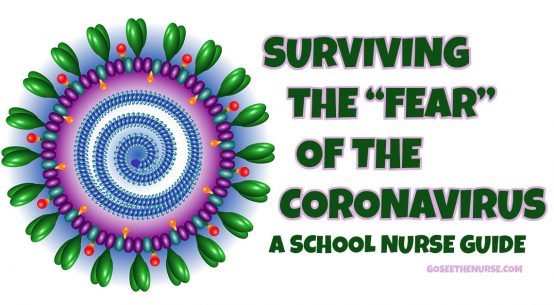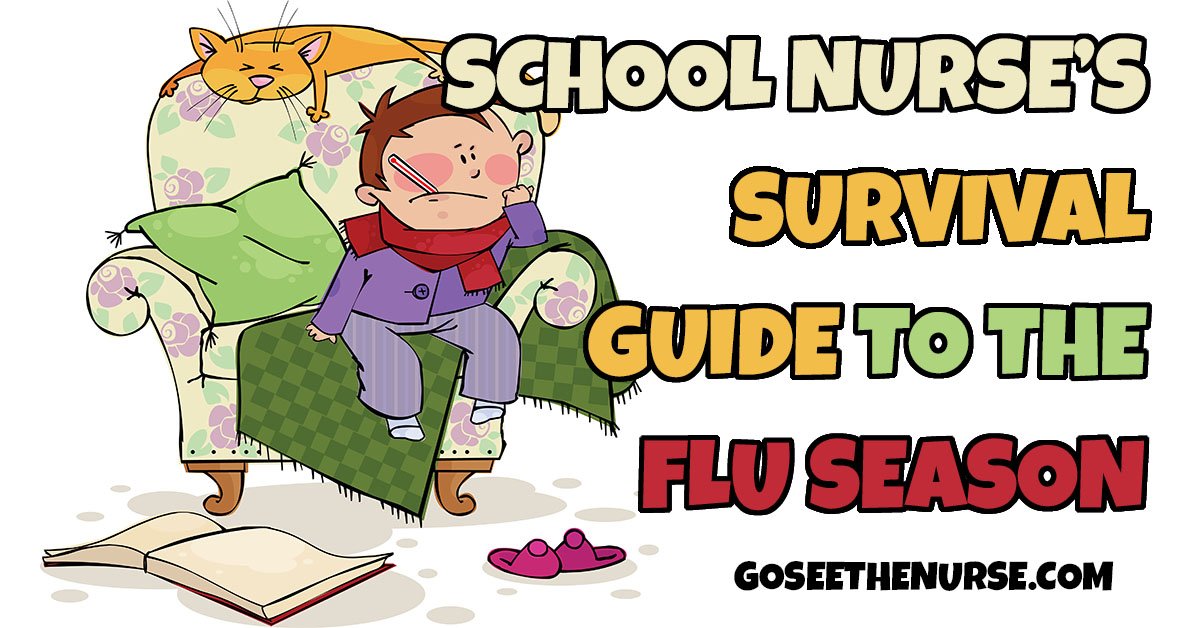
Flu Season and School Nurses are Scrambling
I get a call from one of my old schools with no school nurse the other day, “Nurse Kevin, how do we know when we should close school because of the flu?” WOW! That was a great question. And my response was simple. “It’s at the point where administration is asking the ‘close the school’ question is when you need to close the school.” Thus far in my 5-year school nursing stent of my 22 year nursing career I have taken care of children at 6 different schools (more than some…but WAY LESS than most). It’s just about that 5-year mark that we school nurses starting getting into our groove (maybe). And, as all the years in the past, it’s just after the Christmas break when we start seeing children feeling “kinda sick” one day and suffering from all-out flu-like symptoms the next day.
What’s the difference between swine flu and bird flu?
Swine Flu requires Oinkment and Bird Flu requires Tweetment.
Y’all know the flu, right? Sure you do; you’re a school nurse! Ahhh, let’s talk about it anyway. This is what we’re gonna learn about:
- What is the Flu?
- How do you catch the Flu?
- How does the Flu make us sick?
- What is the Flu Shot?
- What is the Flu Season?
- What is the difference between the flu and a cold?
- In Walks the School Nurse
What is the Flu?
Flu or “the flu” is a contagious respiratory illness caused by influenza viruses that infect the airway: nose, throat, and lungs. That’s the simple explanation.
We know what the flu is…but really, WHAT’S the Flu? How do we catch the Flu and what does the Flu do to us? How does the Flu make us sick? We know the simple explanation but what is “the rest of the story?”
If you ever find yourself in a pandemic, Nurse Kevin’s first rule to follow is: DON’T TOUCH YOUR FACE! The Good Lord dotted our cranial sphere with all kinds of moist, drippy orifices (some of us have more self-installed holes we stick metal objects through) that we tend to bombard with cooties on a minute-by-minute basis as we unknowingly and ambiguously pick, scratch and flick with our dirty little fingers that are absolutely covered in viruses and bacteria…and this is even after following rule number 2: WASH YOUR HANDS.
I know y’all have always heard that you should FIRST wash your hands…yes! Yes! YES! Definitely. But, truth be known, it’s where we put our hands (washed or otherwise) that matter the most. Trust me, there’s likely less bacteria on or in that “area”…also known as “The Ken Doll’s nether regions”…than are on our cellphones…and we still preach, “Wash your hands after going to the bathroom.” When in fact we should be preaching, “Wash your hands after using the phone.” There’s a rumor running around that only 5% of the population wash their hands correctly after going to the bathroom, so that 95% are still touching everything outside the bathroom…that we touch with our “washed” hands. So…
“DON’T TOUCH YOUR FACE” – Nurse Kevin
Influenza, the virus that causes the flu, is transmitted by little, “tiny droplets made when people with flu cough, sneeze or talk.” “Droplets?” That’s a nice way to say, “Spit, Slobber, Mucus and Boogers.” And, the CDC also says that you might get the flu, “by touching a surface or an object that has flu virus on it and then touching their own mouth, nose or possibly their eyes.” Again, getting someone else’s slobber in one of your own facial orifices. So, “Don’t touch your face.”
Then again…flying slobber from someone coughing, sneezing or talking…handwashing or touching your face ain’t gonna matter.
How does the Flu make us Sick?
Our bodies are pummeled each and every moment with an array of viruses, bacteria and fungi; they are literally floating around in the air and we are continuously sucking them in.
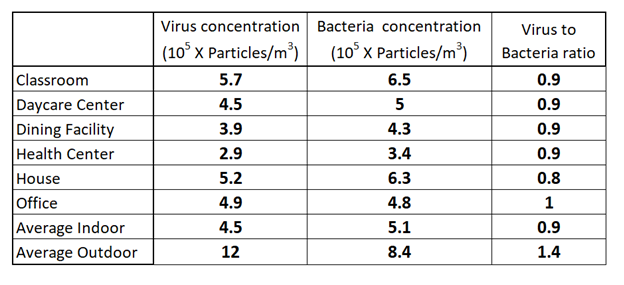
And how many of your parents said, “Get outside and get some fresh air?” Maybe staying inside and playing video games is safer…but wait…did you clean that joycon?
Is the Flu Airborne?
The differences between Airborne, Aerosol and Droplet modes of transmission has to do with a lot of factors (beyond this article’s scope). As I understand, the flu can be transmitted by aerosol means that may…MAY…MAYBE…make it “airborne” or rather “airborne-like.” That’s my speculation. But, the CDC tells us that folks contagious with the flu (not all positive for the flu show symptoms) can spread it to other folks as far away as 6 feet…the guesstimated distance a droplet of slobber with a few piggy-backing influenza viruses can travel. But, then again, consider the up to 40,000 droplets flying from deep in another person’s airway during a sneeze at about 200 miles per hour. I’d say the “6 feet rule” is a good “starting point.”
Okay, so here’s how the influenza virus makes us sick.
What happens is this virus called influenza finds its way from someone else’s mucus membrane and onto our mucus membrane. And though we’ve heard about how “bad” the flu is, that virus…influenza…is pretty nasty.
First, influenza virus finds itself into your airway.
Second, influenza enters…yes…enters…goes into…INVADES your own epithelial cells that line your airway. It actually attaches to our very own cell and invades the cell membrane.
Third, influenza kinda “takes over” the epithelial cell’s “protein manufacturing machinery”
Fourth, influenza uses your own cells for “replication and protein production machinery to multiply.” It uses your own cells to replicate itself and make MORE INFLUENZA VIRUS.
Fifth, influenza uses this “protein production machinery” to make more influenza, pushes the new influenza virus out and then the virus infects nearby cells. The virus is also available in that person’s airway waiting to be “spat upon” other’s mucus membranes. Or to be “spat upon” surfaces and waits on a hand to piggyback on until that finger finds a nose hole.
The bad thing is: the flu makes us feel so cruddy not only from the influenza itself but also from our own body’s immune response…you know…inflammation! Coughing and sneezing and swelling, OH MY!
We now know how we get the flu and why we feel so sick. And, along with sneezing and coughing, someone infected with the Flu may also:
- Headache
- Sore Throat
- Fever (could be HIGH but also afebrile)
- Chills
- Muscle Aches
- Stuffy Nose
- Dry Cough
- Very Tired and Run Down-Feeling
- Little or No Appetite
And though the symptoms can subside after a week or two, the sore and scratchy throat, a persistent cough, drippy nose, and exhaustion could linger for a week or two longer. Basically, the flu will kick your boo-hiney for 2-4 weeks.
What is the Flu Shot?
How do you fight off the flu?
With kung-flu
We all know genetics…and to avoid making this a 5000-word article…we’ll take your understanding of viral genetics for granted. Basically, the virus’ genetics is the virus’ “calling card.” The genetics of the virus is the method by which scientists try (yes, they try) to develop a sneaky little plan to help our own body to prepare itself for those influenza attackers. Here’s how it’s done:
Each year…and ALL during the year…scientists in over 100 countries and working from almost 150 influenza centers are working hard at researching information about influenza. Remember, the flu season is between October and May, right. Well, SHAME! ON! ME! If you are from Chile, South America, you are saying, “De ninguna manera Nurse Kevin!” In the southern hemisphere the flu season is May to October. And as the flu “migrates” around the world and makes it back to the location it was at the year before, it’s almost a whole different “bug.” I ain’t about to try to explain Antigenic Drift or Antigenic Shift. Here’s where you can learn more about that beast of a topic: https://study.com/academy/lesson/how-viruses-mutate-antigenic-drift-and-antigenic-shift.html
Needless to say, the influenza virus that made its way through your area last year is NOT the same influenza virus that will likely make its way through your area this year. And, the “version” of the virus making its way through New England in the Americas right now may not be the same virus making its way through Old England over in Europe.
So, scientists need to be like weather men and women. They have to look at all the data from the 100 countries and 150 influenza centers and GUESS at what strain of influenza will be hitting a particular geographical area. Then, there’s the time involved to grow the vaccine in a quantity large enough to offer to the masses. And trust me; if these experts get it wrong, it ain’t for a lack of trying. And trust me again, the masses will scream if they didn’t get it right.
Consider that it takes “at least six months to produce large quantities of influenza vaccine.” WHAT?!?! It means that for the experts to “hit” next flu season’s flu bug, they have to guess what next year’s flu bug will be THIS FLU SEASON.
Not to mention that it takes about 2 weeks for our bodies to be fully “ready” for the influenza virus after receiving the shot.
How do they make the flu vaccine?
Here’s how it works in a nutshell:
First you have to consider the HA Gene INSIDE the virus and the HA Antigen OUTSIDE the virus.
Second, consider different Flu strains with different HA Genes and different HA Antigens.
Third, these different Flu Strains are injected into a fertilized chicken egg (YES! Like yard-bird, Foghorn Leghorn stuff). Got an Egg Allergy? NO WORRIES. The ACIP has revised the Flu Shot vs Egg Allergy guidance. It appears the egg allergy concern is less of a concern than previously believed. (Nurse Mary…YOU ROCK!)
Fourth, in the egg and after a few processes (understanding the process is well above my E-Grade) the strains of viruses “mix” and form as many 256 possible combinations.
Fifth, experts take a “new” flu strain and…voila! Next year’s vaccine!
There’s more to it, but again…that’s the simple form. Here’s a link to a cool graphic:
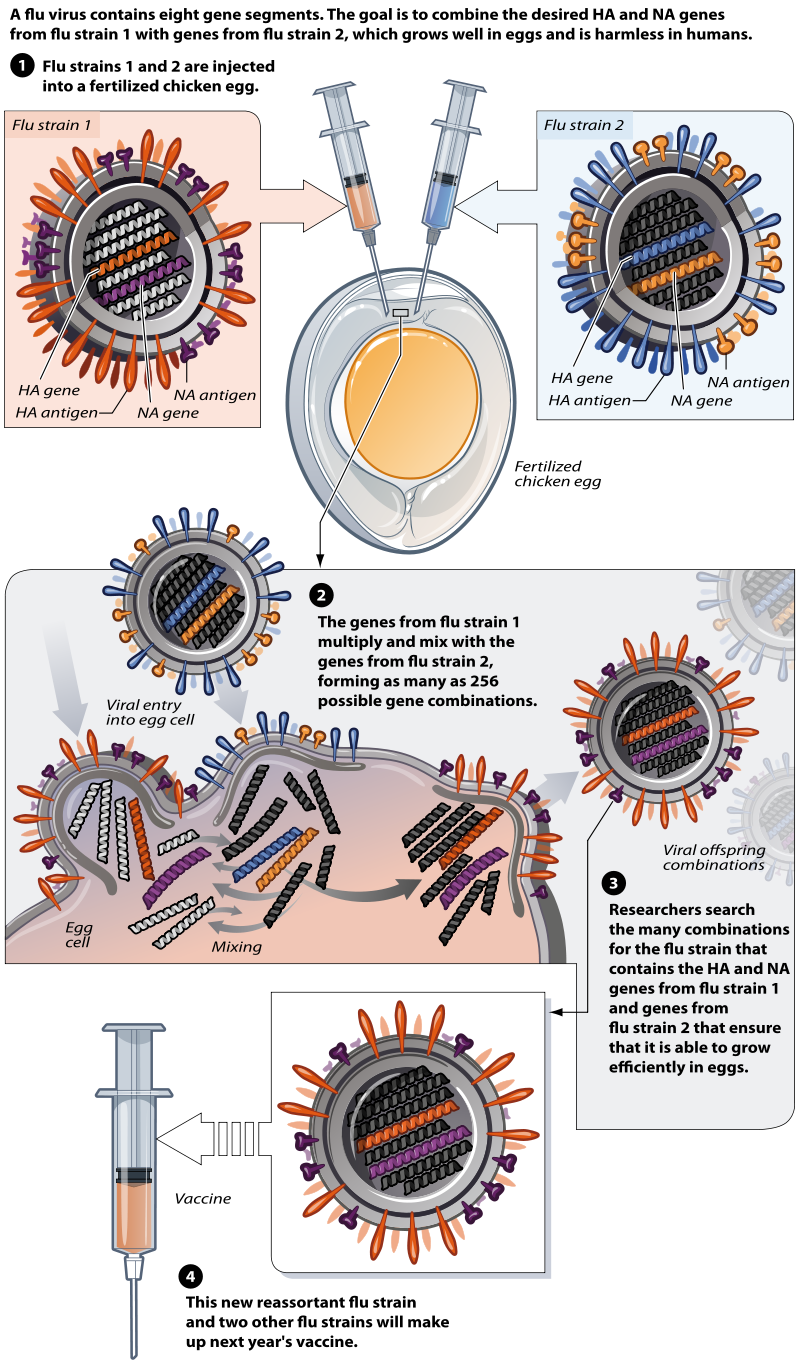
The vaccine production processes include:
Egg-Based Flu Vaccines – As described above
Cell-Based Flu Vaccines – Uses a “mammal” cell instead of an egg
Recombinant Flu Vaccines – Where they create the vaccine artificially
Read more on these three methods: https://www.cdc.gov/flu/prevent/how-fluvaccine-made.htm
And if you think making vaccines out of eggs and animal cells is gross…well…maybe. Consider that they use to get a diabetic’s insulin from cows and then later from pigs. Now insulin is manufactured from E. coli bacteria. Better than the 500 pounds of pig pancreases that would render a tender ounce of insulin.
To Flu Shot or Not To Flu Shot, That is the Question.
You should get your flu vaccination.
It’s worth a shot.
Is the Flu Shot Really Effective?
Well, that depends on who you ask. I love it when you all read my articles from start to finish. And, like me, the news articles and reports like to be consumed in their entirety for as long as you are either reading the article or listening/watching the report. If the headlines reads, “Flu Shot Effective this Season,” you’ll likely go get the shot and call it a day. But, if they report that the vaccine is a poor match to this year’s flu vaccine, you’ll likely keep reading/listening/watching and pass on the flu jab! Drama sells! That’s for sure. But what does “Effective” and “Poor Match” and terms like these mean when considering the flu shot?
Like the weather, the experts trying to predict the strain of influenza to hit an area is very difficult. The Seasonal Flu Vaccine Effectiveness has ranged from 19% to 60% over the past 10 seasons (not including the 2019-2020 season). Is this good or is this bad? I guess it depends on these questions that will shape your paradigm: Did you get the shot and get the flu? Did you get the shot and not get the flu? If the second condition came true, then are you doubting the shot and thinking, “I didn’t really need that shot?” Or, did you pass on the shot and got the flu and are kicking yourself for not getting the shot. If you think you got the flu after getting the shot…na…it didn’t happen. What likely happened was the immune response to the vaccine (remember when I said it was the body’s immune response to the flu that makes you most miserable). Or maybe it was a phenomenon that Nurse Kevin calls a “Coincidental Event.” You were going to get sick anyway. Who knows?
What is a “Coincidental Event?”
Okay. Let me simplify this. A parent tells me that her child is allergic to Spaghetti O’s. I ask the parent, “Why just Spaghetti O’s?” She responds, “Because he threw up after eating Spaghetti O’s.” More than likely the child ate a TON of those O’s bathed in that red sauce and puked them all up. The mother, in all her wisdom likely put two-and-two together and thought this pathway: Child eats Spaghetti O’s, child vomits, child has allergy to Spaghetti O’s. More than likely, it was a Coincidental Event: Child eats too much Spaghetti O’s then, coincidentally, body EJECTS Spaghetti O’s.
Here’s what the CDC says (verbatim): “CDC recommends everyone 6 months of age and older get vaccinated every flu season. Children 6 months through 8 years of age may need 2 doses during a single flu season. Everyone else needs only 1 dose each flu season.”
When I was a hospice nurse, I would offer the vaccine to every one of my patients (provided they were at a “stable” point in their hospice journey (you know what I mean)). Dying while suffering from flu symptoms was not okay with me. And why not vaccinate?
As a medical professional, I am sticking to the CDC’s recommendations as the “Official” Nurse Kevin Recommendations. But, if you or yours decides to pass on the flu shot, then Nurse Kevin recommends vaccinating those who are most susceptible to DIE from the flu (and DIE they may):
- Young Children
- Older Adults
- Asthmatics
- Folks with Chronic Illness but definitely those with heart, lung, or kidney disease
- Our beloved immunocompromised
- Everyone else
I thought I’d sneak #6 in there. Anyway…to be clear…the list should be a one-bullet-pointer: Everyone should follow the CDC’s and their doctor’s recommendations.
What is the Flu Season?
The CDC says, “The United States experiences annual epidemics of seasonal flu.” Did they just say “epidemic?” Sure they did. But it’s an expected event right? Afterall, we expect the “season” of winter and a football “season.” But how can we describe a “season” as an “epidemic?” Well, because each year it is. No matter how much preaching and teaching and shot-promoting, the flu season is always, “one of the worst on record.” That’s at least how the media likes to play it.
Outbreak vs Endemic vs Epidemic vs Pandemic
Did you hear about the aspiring YouTube star that died from the flu?
He finally went viral.
Since we are talking about “epidemics,” let’s clear these four terms up:
Outbreak: If the number that are sick is higher than is expected.
Endemic: When you have an expected number of folks suffering from a particular illness that is considered common to an area. Chickenpox is endemic in Idaho so we vaccinate for it. However, malaria is not so we don’t vaccinate for it.
An epidemic is when an illness (like the flu) is an “occurrence” that is experienced by many in an area or community during a period of time (like the flu season).
The CDC says, “The United States experiences annual epidemics of seasonal flu. This time of year is called ‘flu season’.”
Each year we start seeing cases of flu around the first to the middle of October. It’s usually “one-here-and-one-there.” And, each year around the end of December and weans off around the middle to the end of February. However, you can still find folks catching the flu as late as May and…well…anytime of the year.
What is the difference between the flu and the cold?
Child comes into the health office on Tuesday, “Nurse Kevin. I am so sick because I had the flu yesterday.”
Nurse Kevin, “You had the Flu yesterday? Just for one day?”
Child, “Yeah. I can’t have the flu on Sunday because I am not at school.”
Nurse Kevin, “What does being at school and having the flu have to do with one another?”
Child, “Because you’re not here to take care of me.”
Gotta love them children (and their logic).
Is it a Cold or is it Flu?
The CDC has an awesome infographic here (https://www.cdc.gov/flu/symptoms/coldflu.htm):
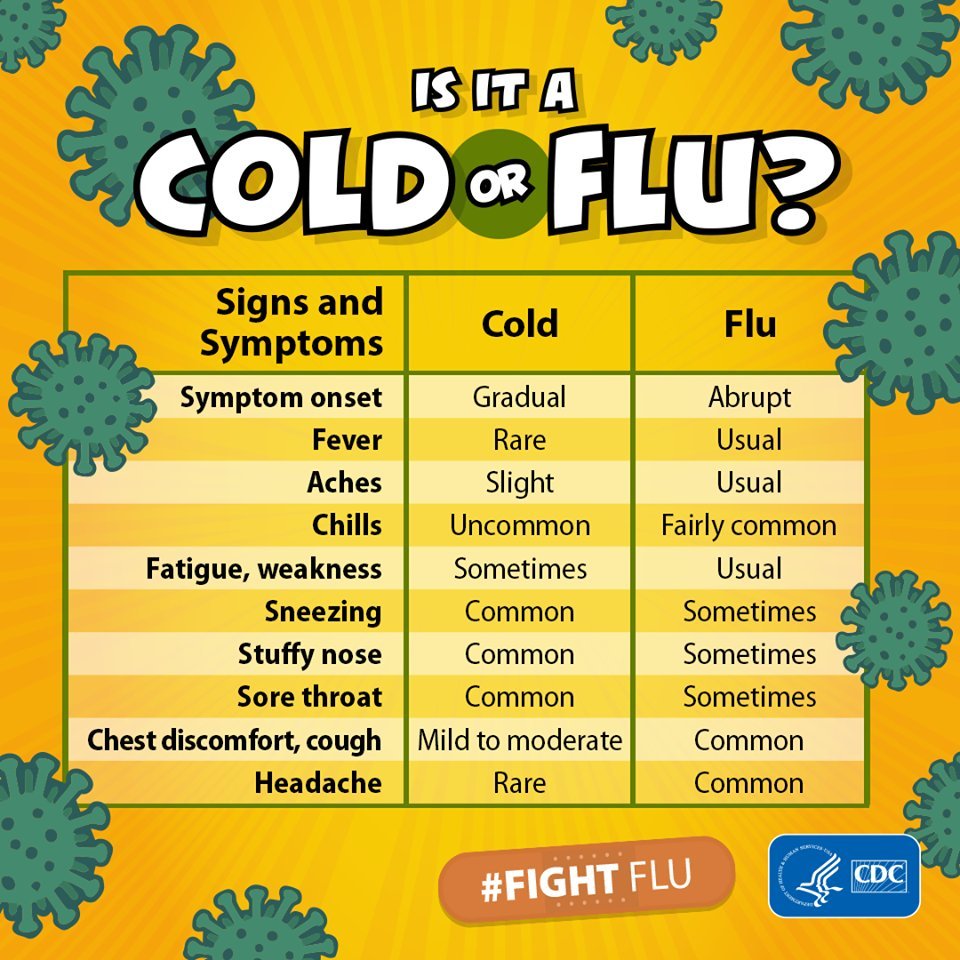
Truth be known, you can have the Flu and not be symptomatic! For real!.
In Walks the School Nurse
How did Captain Kirk get the flu
He Khan-tracted it
You see your fair share of kiddos with at least one of the flu-like symptoms every day. From headaches, bellyaches, to body aches…they come and go with a whole array of complaints. And they should. After all, YOU and YOU alone may be the only medical professional that child will see this year…or the next three years.
But, if you see a child with any combination of the following symptoms:
- Vomiting
- Fever (100.0 or greater)
- Body Aches
- Chills
- Malaise
- Chest Discomfort
- Your Nursery-Senses are Tingling
They do not pass go and they do not collect their $200. They go HOME.
If the younger children show up and look flu-ish but they do not have a fever, ask them this question, “What flavor medicine did you get this morning?” BINGO! Often the child will have symptoms and a fever when they wake (or ALL NIGHT). But the parent will dose with an antipyretic (fever reducer). I am so, so sorry. That child needs to go home and remain home until a full 24 hours has past where they neither had a fever nor required an antipyretic to “ward off a fever.” (We’ll talk about keeping them home longer with a positive influenza test).
I’ve heard parents tell me that they will get fired if they miss another day of work. Truth be known, that parent has found themselves in that occupational predicament for reasons other than an ill child. And what about the other parent of the child who catches the flu from this poor, suffering child that the parent is willing to leave at school to pass that virus off to other just to save their job…okay…whew…I got on a soap box…I’ll step off now.
But, if all else fails and you cannot get that child home via an emergency contact. Keep that child safe and sound in an area where they are least likely to pass his illness to others and if the child is a busser, check with your administrator to collaborate with your school’s SRO for a safe trip home…NO BUS!
How Long Should a Child with Flu Stay Home
Our local health department says this, “Confirmed cases of Influenza B MUST REMAIN HOME from school and school activities for seven days from the onset of symptoms, longer if fever persists.” Yep…I’m going with that.
Finally, what’s the difference between Influenza A, B and C. The CDC gave a great description here: https://www.cdc.gov/flu/about/viruses/types.htm
More Flu Jokes (Sorry…having the Flu ain’t funny…but if you know the out-of-place-humor of Nurse Kevin…then…)
- The bird flu is pretty nasty
- Luckily, it’s tweetable.
- A patient tells his doctor he thinks he contracted Swine Flu and Avian Flu at the same time.
- The doctor tells him “I’ll believe that when pigs fly.”
- Someone tried to make a pun about sickness.
- But it flu over my head
- How did the pope get the bird flu?
- From the cardinal.
- What do you give a porcupine when he has the flu?
- NyQuill
Special Thank You
Technical Edits by Mary Dennis, RN, BSN – You’re the 2nd most beautiful woman in the world!
Edited By J.S.Walker – The FIRST most beautiful woman in the world!
Links to Learn More
https://www.cdc.gov/flu/season/faq-flu-season-2019-2020.htm
https://www.nfid.org/toolkits/keep-flu-out-of-school-sample-newsletter-website-content/
https://www.nasn.org/programs/educational-initiatives/keep-flu-out-of-school
https://www.healthline.com/health/24-hour-flu
https://www.verywellhealth.com/what-is-influenza-a-770484
https://www.vincentsmithschool.org/News/the-flu-a-guide-for-parents/104
https://www.nasn.org/programs/educational-initiatives/keep-flu-out-of-school

I hope you enjoyed this article. There’s more coming. Want to make sure you get the latest from your ol’ buddy Nurse Kevin? Sign up for the Go See The Nurse Newsletter (I won’t bug you; I promise).
Your information is kept private! Here’s my Privacy Statement.



